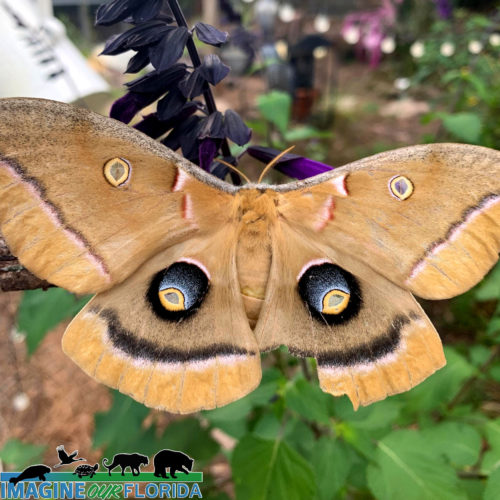The Polyphemus moth, Antheraea polyphemus, is a giant silk moth that can be found from Mexico to southern Canada and in every US state except Nevada and Arizona. The moth’s wingspan measures 4 – 6 inches. Colors vary and include gray, tan, and brown with shades of red, yellow, and pink. Polyphemus moths have large eyespots on their hind wings and were named after Polyphemus, the giant cyclops from Greek mythology with a large eye in the middle of his forehead. The male’s (pink pictured) antennae are bushier than the female’s (tan pictured) antennae.
Females produce 2 broods each year. In Florida, newly emerged Polyphemus moths can be found year-round. Because of their vestigial mouthparts, they cannot eat. A newly emerged female will release a pheromone to attract a male. The dating game lasts throughout the night with the most activity a few hours before sunrise. The pair will remain coupled all day before separating at sunset. For the next several nights, the female will lay single eggs in groups of two or three on a leaf of an oak tree or other desirable host tree.
Look for these moths near man-made light sources. Of concern is the Polyphemus moth’s attraction to mercury vapor lights that may distract them from mating, thus impacting their populations in cities and neighborhoods. (Worth and Muller 1979)




